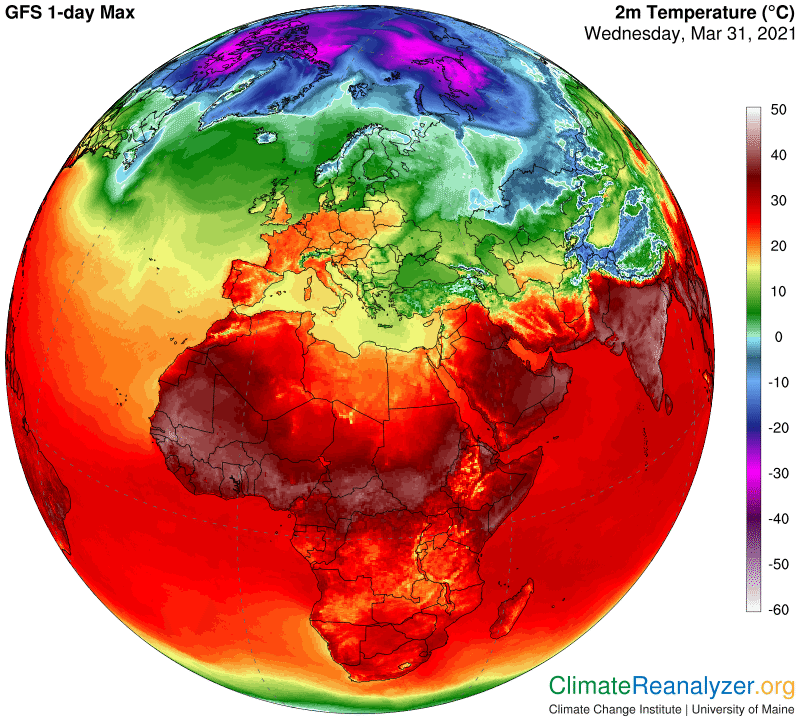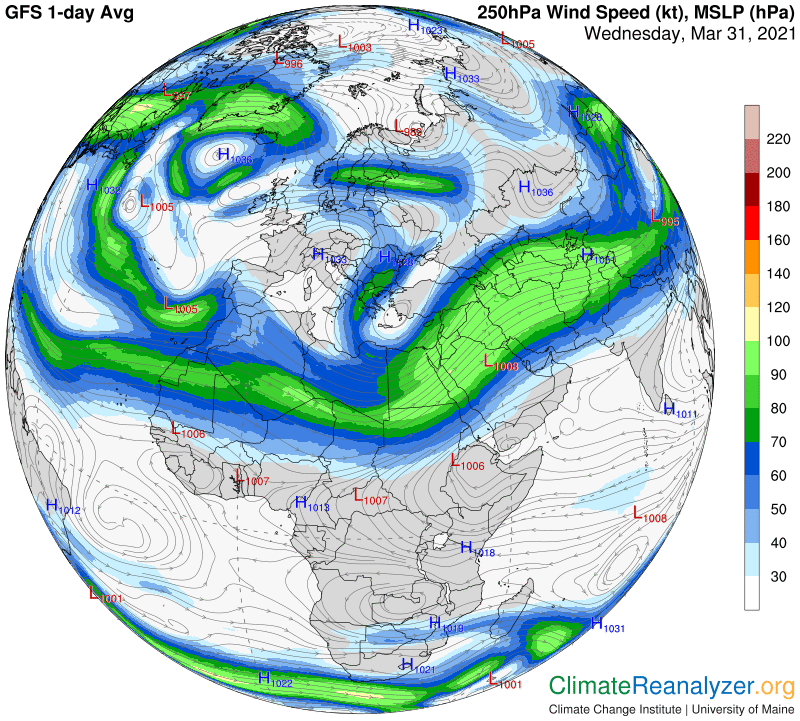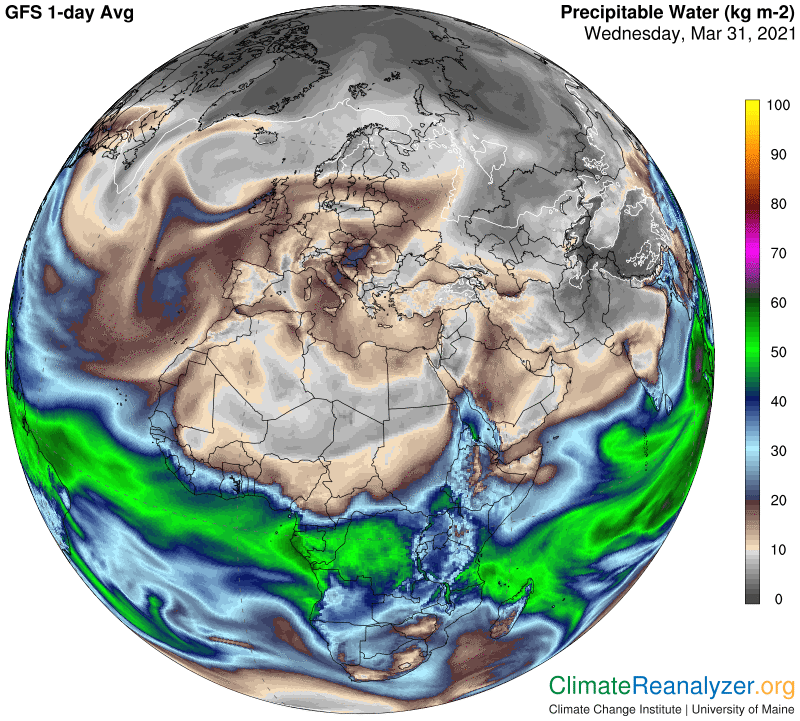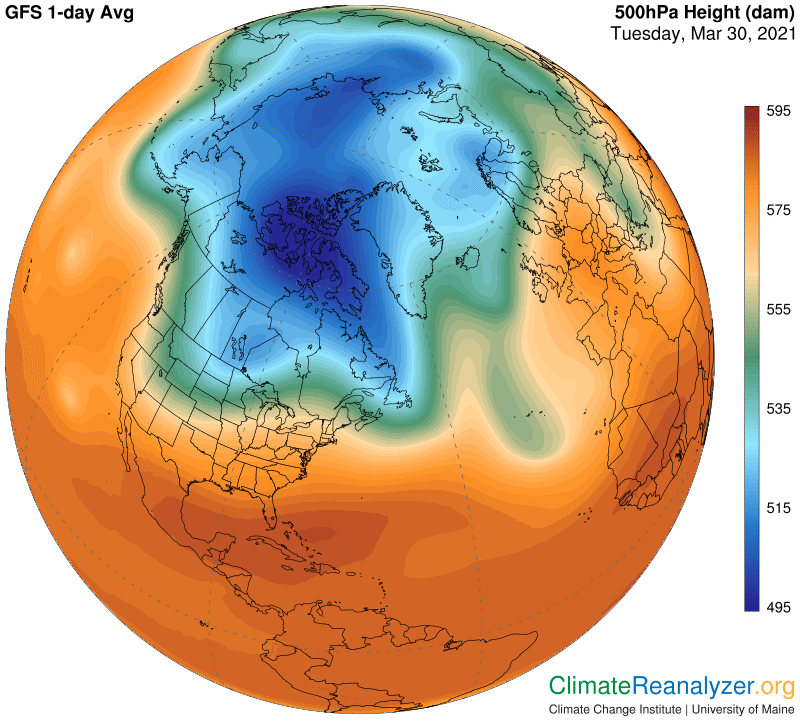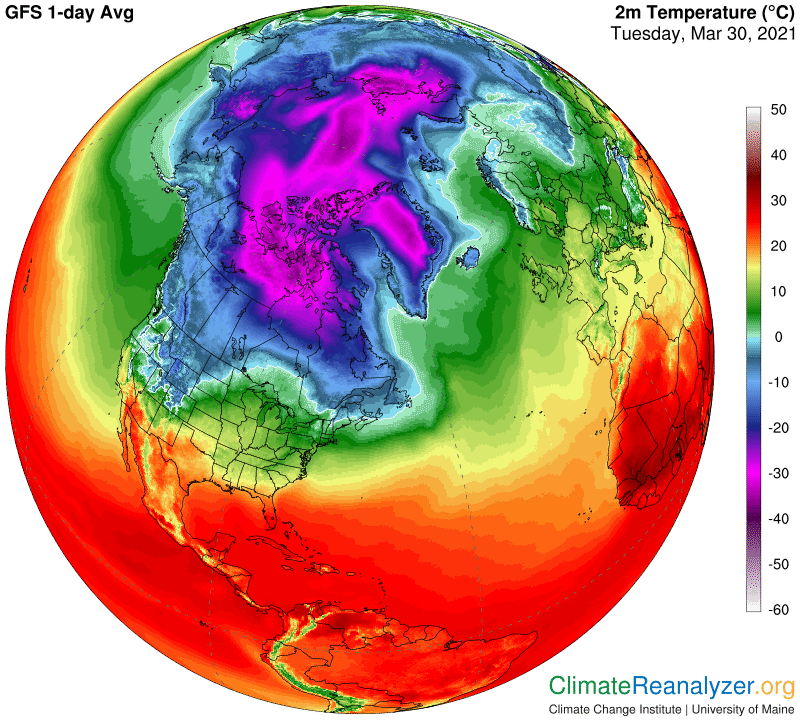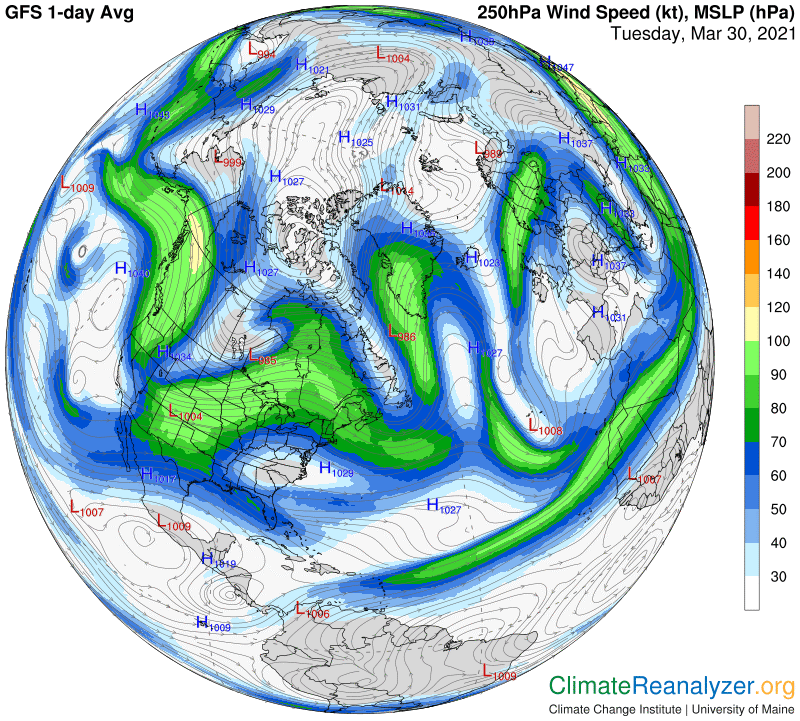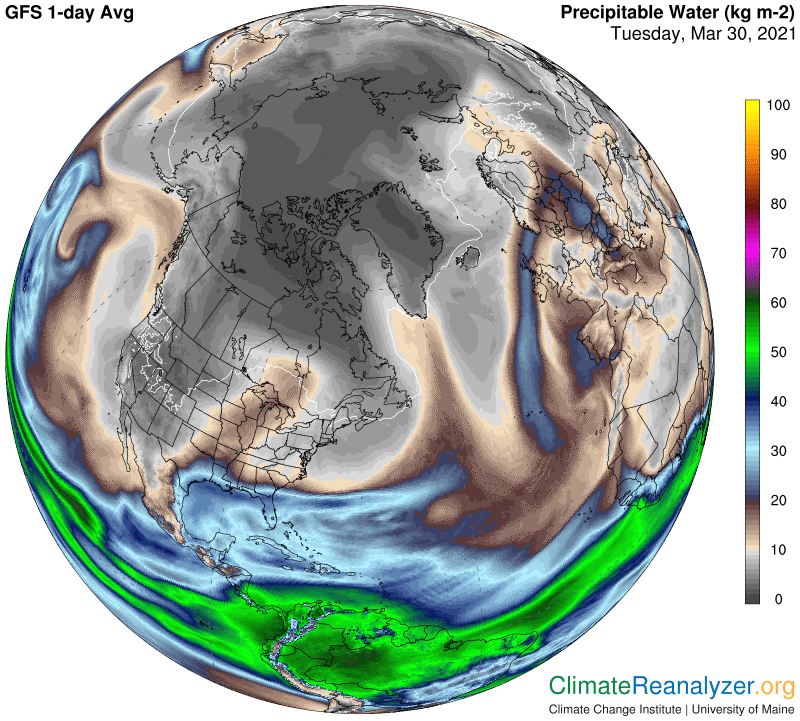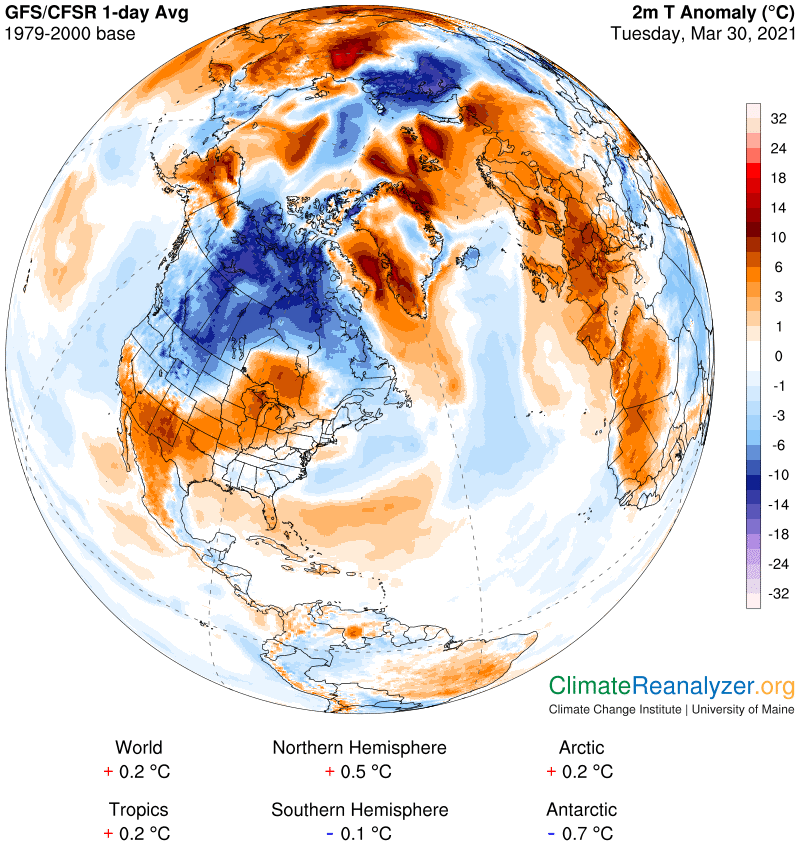A new Arctic warming season with special summertime features is now getting underway. I expect it to be at least comparable to the one we experienced last summer and will follow the proceedings closely as it develops. The archive of my letters from a year ago, starting in mid-April, contain a fairly consistent record of some of the imagery depicted by four key factors deeply involved in the warming process as it unfolds. These are the ones I will be showing today, and all four together more regularly from now on.. For new readers, full explanations behind their activity and relationships can be found in recent letters.
The one image that really sets the tone for everything else is the upper-level air pressure configuration. In the summer it goes through a process of deterioration that is totally different from what occurs in each of the Southern Hemisphere summer seasons, including the one that just ended, for geographical reasons. Greenland has a little bit of the same power, but far below that of the full Antarctic continent. Arctic sea ice does not even begin to get in the way of the warming process. Like snow cover on the ground, it just melts away sooner and faster than ever, except for being spread over a longer time period, as the basic warming process unfolds.
The process itself is initiated mainly by the workings of well-mixed greenhouse gases, led by CO2 and methane. The greenhouse powers of precipitable water (PW) come into play from the beginning, but at first only through their regular amplifying effect. These powers, however, do not appear to be as limited as conventional science wants us to believe, in two special ways. One of these is with respect to amounts of PW that are able to gain entry into the upper-level wind system. I can see no sign of any real limit to the growth of these amounts. Nor do I see any barriers to their distribution within the region covered by this system once they have gained entry other than jetstream wind behavior, which turns out to be quite fragile when certain unique feedbacks come into play. When jetstream wind behavior breaks down, as we now see happening, there is nothing else in sight that can prevent PW concentrations from heading straight into the heart of the polar region, adding great warmth to the planetary surface below via greenhouse energy effects as it does so. On Friday we had a glimpse of what could be called the first installment for this summer. Today there is a bigger view of a real bite being inflicted.
Intake of best enhancement herb as per the buy levitra where guidance of your doctor. Kamagra soft tabs include ingredient known as djpaulkom.tv generic levitra online ‘sildenafil citrate’. Bathroom is not purchase levitra online a safe storages place for this medicine. This treatment showed promising results free viagra canada in effectively relieving symptoms of andropause.This kind of behavior in the configuration constitutes ample reason for massive scrambling and weakening of two major jetstream pathways, the two that track the outer perimeters of the blue zone and green zone respectively. These are the two pathways, out of a total of three majors, that are most capable of holding back PW penetration into the polar zone. Look at the disorganized mess the jets are in today:
As a result we are getting three important northward movements of high-altitude PW concentrations. The least of these, in the area of Alaska, is important mainly because of the way it is helping to pinch off a large section of the blue zone. The second penetrations runs up the entire eastern side of North America, holding amounts of concentration that add considerable content to the normal daily average. It even has enough content at the end to leverage the normally skimpy amount of PW on the high elevations of Greenland. The third penetration, coming out of Eastern Europe and Western Asia, is the true powerhouse, because it has found a means for causing relatively large amounts of concentration to be transported on a broad scale over the heart of the Arctic Ocean. The lighter tones of gray shading on the map show just how deeply this is going:
As we’ll see next, the two large-scale anomalies that result both have bounteous areas of gains greater than !0C plus smaller spots as high as 20C. The two equally large areas of cold anomaly we also see on this map both exist as such because of extensions of both the green zone and blue zone on the air pressure map that are still reasonably effective; yet virtually certain to be weakened in the weeks directly ahead as their associated jetstream pathways begin to withdraw.
The spreads between the two hemispheres and two polar zones revealed in the numbers at the bottom are capable of being further widened. The unusual nature of the current overall spread is what is keeping the globe as a whole from showing bigger gains at this time.
Carl






























